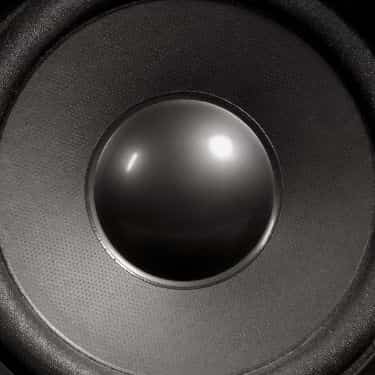If you’re an audio enthusiast, you’ve probably come across the term “SPL” at some point. But what does SPL actually mean?
In simple terms, SPL stands for sound pressure level. It’s a way of measuring the amount of pressure that sound waves are exerting on a given surface. The higher the SPL, the more pressure the sound waves are exerting. SPL is important, as it is a measure of the perceived loudness of the speaker.
We usually measure this pressure in decibels (dB). For reference, a whisper is about 30dB, a normal conversation is about 60dB, and a loud rock concert can be over 120dB.
In this article, I want to dig deeper into the meaning of SPL and why it is actually very useful to understand, especially when comparing loudspeakers.

What Is Speaker SPL?
In short, SPL is a way of measuring loudness, or, more specifically, perceived loudness. The higher the SPL, the louder the sound.
However, SPL can also be used to compare two different sounds. For example, if one sound has an SPL of 60dB and another sound has an SPL of 80dB, the second sound is twice as loud as the first.
A speaker with a higher sensitivity rating will be able to produce more SPL with less power. Conversely, a speaker with a lower sensitivity rating will require more power to produce the same SPL.
How Do You Measure Speaker SPL?
SPL is measured by placing the speaker into an anechoic chamber, which is a room specifically designed to reduce acoustic reflections.
A microphone is then placed at a distance of one meter (1m) away from the speaker, positioned at the centre of the speaker.
A test tone or frequency sweep, with frequencies of between 20Hz-20kHz, is then played through the speaker.
This frequency range is chosen as it includes the full frequency range that humans are capable of hearing.
From this, software is used to plot an output graph that shows the frequency on the x-axis and SPL on the y-axis.
Frequency is measured in hertz (Hz) and SPL is measured in decibels (dB).
This graph will show how the SPL varies over the wide range of frequencies between 20Hz and 20kHz.
SPL can be a great way to compare speakers from different manufacturers. However, you must be careful as the SPL measurement test is not standardised.
As a result, many loudspeaker manufacturers may come up with different SPL values.
A speaker’s 1W/1m SPL value will tell us how loud a speaker will sound with 1 Watt of input, at a distance of 1 meter.
What Is Max SPL?
Max SPL is an important parameter for loudspeakers as it tells us how loud you can play your speaker before it breaks or distorts, resulting in poor audio output.
What Is A Typical Max SPL Value?
Although Max SPL values will differ depending on the loudspeaker design, most PA and sound systems have a Max SPL between 100dB-130dB.
To put that into context, a loud rock concert will be around 120dB.
How Do I Read An SPL Graph?
The following is a standard SPL graph from a large manufacturer [source].

The graph shows the volume of each frequency with the 20Hz-20kHz audio range.
We can see dB on the y-axis and the frequency range on the x-axis.
In theory, a perfect speaker would produce a flat line, i.e. it would reproduce sound frequencies perfectly. However, this is not true in practice.
What we are looking for is a relatively flat curve. In other words, the curve is roughly within the same volume and level with no major peaks or dips, which indicates inconsistencies in the output frequency.
A relatively flat curve indicates that there will be consistent volume over the entire frequency range, which will sound better and more natural.
There are also some general guides to follow. For example, the midrange should not be louder than the bass or treble.
As the voice typically is set in the mid-range, if the mid-range is unnaturally loud compared to surrounding frequencies, music and sound with voice could sound unnatural.
What Is A Good DB & SPL Result For Speakers?
As a general rule, the SPL level that is best for you will depend on your application. For example, if you are using the speakers in a large room, you will need a louder speaker and power to get the full effect of the speaker.
A good SPL level is one that is loud enough for you to enjoy your speaker system.
Ideally, you should listen to your preferred speaker system before you buy and make a decision on the actual performance of the speaker. The speaker specifications are great as a guide, but nothing beats listening to the actual speaker and trusting your ears.
Final Thoughts
Measuring speaker SPL is a common way to compare the volume output of different loudspeakers. However, as there is no standardised way to measure SPL, it’s important to be aware that results may vary from manufacturer to manufacturer.
Max SPL is an important parameter for loudspeakers as it tells us how loud you can play your speaker before it breaks or distorts.
Most PA and sound systems have a Max SPL between 100dB-130dB. To get the best results from your speaker system, it’s important to listen to it before you buy and to trust your ears.
